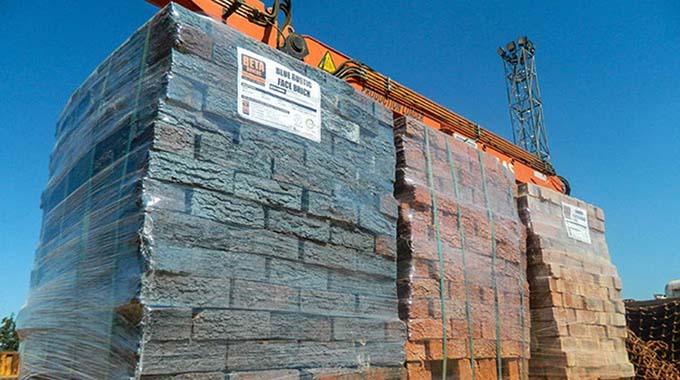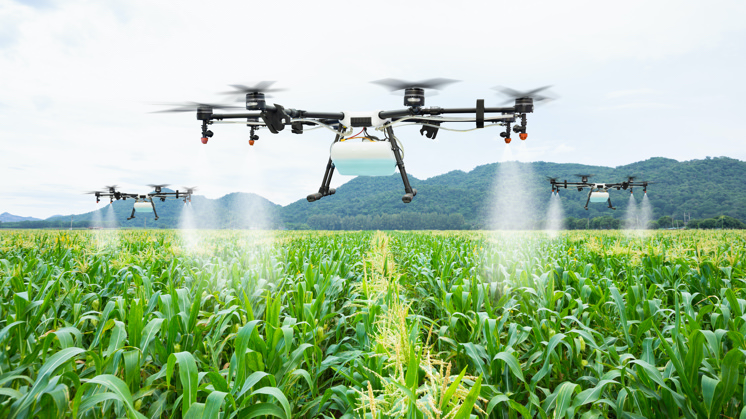Government procures drones to control quelea birds
NINE drones have been bought to track and spray the roosts of quelea birds so they can be destroyed before they attack wheat and traditional grain as Government moves to increase productivity levels and step up ways to digitalise the economy.
The drones will be distributed to provinces with district crop specialists now undertaking training on the correct use of drones to minimise accidents
The T40 drones have the capacity to carry 40 litres of chemical and are equipped with state of art improved atomised spraying system.
These drones will see an improved pest control efficiency as drones are able to reach areas that were previously inaccessible by the spraying teams.
Authorities are making efforts to make sure that all farming and settled areas across the country are free from these pests, hence farmers should embrace new technologies to boost agricultural operations.
Speaking during a handover ceremony of drones held in Harare, Lands, Agriculture, Fisheries, Water and Rural Development Permanent Secretary Dr John Basera said the purchase of the drones was timely adding that they have come at the best opportune time where wheat is now entering its most vulnerable stages.
‘’The migratory quelea birds have become our biggest threat to wheat production with estimated yield losses exceeding 95 percent If uncontrolled. Today is a testimony to how serious as a ministry we are in making sure that every grain counts as we target to export wheat and other cereal crops such as traditional grains. The decentralisation of spay operations to provinces shall ensure timely responses to outbreaks’’he said.
Other benefits of deploying drone technology in agriculture include greater precision in surveying, mapping and monitoring large areas of land.
Quelea evolved to eat grass seed attack any grain below a certain size. So while maize is safe, traditional grains and wheat will be attacked and eaten.
Dr Basera has assured farmers that it has adequate resources for quelea control this season adding that they should take advantage of the Pest Command Centre established for Early Warning and reporting outbreaks.
Department of Migratory Pests and Biosecurity Control director Shingirayi Nyamutukwa said this year they do not want any damage to wheat adding that the use of drone technology and better coordination will contribute to greater success in minimising damage to this year’s winter wheat crop by huge ravaging flocks of quelea birds.
‘’We are currently undertaking training because we do not want any damage from this year’s wheat. We are well geared to combat quelea birds. The birds have reportedly been seen in Hippo valley, Birchenough and Shamva. We want to protect our wheat from these birds so we are well prepared to combat them so that our wheat productivity remains high. Farmers should continue scouting for the birds,’’ he said.
The country is expecting a bumper harvest of 420 000 tonnes of wheat from 86 000ha.
Zimbabwe has adopted the use of drone technology in pests and border control. The use of drones to complement knapsack spraying has been adopted to improve efficiency and reduce costs. Quelea birds are the largest contributor to heavy wheat losses annually estimated at over 95 percent if uncontrolled.
The birds have been a threat to summer subsistence small grains and commercial winter cereal cropping in Zimbabwe for years.
Recently, the department said early identification of quelea roosting sites will prompt early control before wheat reaches the soft dough stage which is critical in wheat growth.
The quelea roosting sites can be identified by the presence of white to cream coloured heavy droppings of the birds and they generally roost in bulrush, reeds and acacia bushes among other roosts.
Reports are increasing as the early planted wheat crop is now in its early reproductive stage but the department is intensifying efforts to control the birds by responding timeously to the distress calls to help safeguard the farmers’ harvests.
Wheat farmers have expressed gratitude over the Government’’s initiative of procuring drones.
Chitomborwizi farmer Mr Clemence Muguze said the initiative is likely to end quelea menace adding that productivity this season will not be affected unlike the previous years.
“We are happy to realise that we have a Government which is committed to secure drones which will go a long way in alleviating this quelea menace.
We are grateful because quelea birds are disastrous and they can destroy the efforts of farmers and derail the country’’s bumper wheat harvest. The incorporation of drone technology for control and surveillance will give us an advantage in the fight against these birds,’’he said.
Another farmer, Mrs Tendai Makuzva of Banket in Maheu, said Government’s intervention is a positive move which shows a step in the right direction towards achieving food self-sufficiency.
‘’We have no doubt that this year our wheat productivity will be high. The interventions implemented so far in wheat production speaks volumes to the good leadership skills by the Second Republic. We have enough water and electricity that is needed to ensure successful growth of wheat. So far everything is in place hence we are assured of a bumper harvest,’’ she said.
Each tiny bird can feed on ten grams of wheat per day and experts say a few million birds can result in losses exceeding 40 000 tonnes when the quelea birds invade fields in large flocks. The red-billed quelea is a small weaver bird native to sub-Saharan Africa and renowned for its attacks on small-grain crops within Africa. It is the most numerous bird species in the world, with a peak post-breeding population estimated at 1,8 billion.
Nomadic super-colonies can grow to millions of birds, making quelea not only the most abundant bird in the world but also the most destructive to cereal grains, especially sorghum and millets as well as wheat, rice and barley.-chronicle










